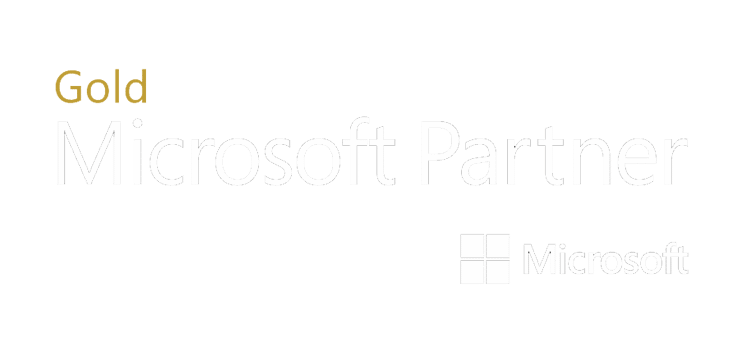Email is a critical communication channel for individuals and organizations alike, and it is frequently used to transmit sensitive information, such as passwords, financial data, and personal information. However, email-based attacks, such as phishing, spoofing, and spam, can compromise the security and trustworthiness of email messages. We create these layers of protection through the combined effort of SPF, DKIM, and DMARC protocols. Although technical in nature, these protocols apply to each and every business and is crucial to have these security measures in place.
How do these protocols better protect our business?
- Prevents Email Spoofing: Email spoofing is a technique used by attackers to forge the “From” field in an email message, making it appear as if the message was sent by someone else. This can be used to launch phishing attacks, distribute malware, or spread spam.
- Increases Email Deliverability: Email authentication protocols can help increase email deliverability by reducing the likelihood of email messages being marked as spam or blocked by recipient email servers. By implementing these protocols, organizations can help ensure that their legitimate email messages are delivered to their intended recipients.
- Protects Brand Reputation: Email-based attacks can damage an organization’s brand reputation and erode customer trust. If customers receive spam or phishing emails that appear to come from an organization’s domain, they may become wary of interacting with that organization or sharing sensitive information with them. Email authentication can help protect an organization’s brand reputation by preventing email-based attacks and ensuring the integrity and authenticity of email messages.
- Ensures Regulatory Compliance: In some industries, such as healthcare and finance, there are regulations that require email authentication protocols to be in place. Failure to comply with these regulations can result in legal and financial penalties.
What is SPF and how does it benefit us?
SPF, or Sender Policy Framework, is an email authentication protocol that helps prevent email spoofing and email-based fraud. Here are some benefits of using SPF:
- SPF helps prevent email spoofing by checking that the sender of an email is authorized to use the sending domain. It helps ensure that the email message is actually coming from the domain it claims to be coming from, and not from a spoofed or forged address.
- SPF can improve email deliverability by reducing the likelihood that email messages will be marked as spam or blocked by recipient email servers. When the recipient email server receives an email with a valid SPF record, it can verify that the sender is authorized to send email from that domain, and can allow the email to be delivered to the recipient’s inbox.
- SPF can help increase email security by reducing the risk of phishing attacks, where attackers try to trick users into divulging sensitive information or clicking on malicious links. By verifying that the sender of an email is authorized to use the sending domain, SPF can help prevent phishing emails from reaching their intended targets.
What is DKIM and how does it benefit us?
DKIM (DomainKeys Identified Mail) is an email authentication protocol that helps prevent email spoofing and email-based fraud. Here are some benefits of using DKIM:
- DKIM helps prevent email spoofing by adding a digital signature to email messages that can be verified by recipient email servers. This signature ensures that the email message has not been altered during transit and that it was sent by an authorized sender.
- DKIM can improve email deliverability by reducing the likelihood that email messages will be marked as spam or blocked by recipient email servers. When the recipient email server receives an email with a valid DKIM signature, it can verify that the email message has not been tampered with and was sent by an authorized sender, and can allow the email to be delivered to the recipient’s inbox.
- DKIM can help increase email security by reducing the risk of phishing attacks, where attackers try to trick users into divulging sensitive information or clicking on malicious links. By adding a digital signature to email messages, DKIM can help prevent phishing emails from reaching their intended targets.
- DKIM provides accountability by enabling the recipient to trace the source of an email message. This can help identify the sender of a fraudulent email message, which can be useful for tracking down spammers and other malicious actors.
What is DMARC and how does it benefit us?
DMARC (Domain-based Message Authentication, Reporting and Conformance) is an email authentication protocol that helps prevent email spoofing and email-based fraud. Here are some benefits of using DMARC:
- DMARC helps prevent email spoofing by checking that the sending domain aligns with the DKIM signature and SPF authentication results. It ensures that the email message is coming from an authorized sender and not from a spoofed or forged address.
- DMARC can improve email deliverability by reducing the likelihood that email messages will be marked as spam or blocked by recipient email servers. When the recipient email server receives an email with a valid DMARC record, it can verify that the email message has not been tampered with, and was sent by an authorized sender. DMARC provides clear instructions for email receivers to follow when handling messages that fail authentication, which can help reduce false positives.
- DMARC can help increase email security by reducing the risk of phishing attacks and email-based fraud. By providing a policy framework that specifies how to handle email messages that fail authentication, DMARC can help prevent fraudulent emails from reaching their intended targets.
- DMARC provides reporting and analytics on email authentication results, which can help domain owners and email senders better understand their email traffic and identify potential issues. This can help improve email deliverability, identify phishing attacks and email-based fraud, and monitor compliance with email authentication policies.
What can happen if we don’t have these protocols in place?
If you don’t have SPF, DKIM, and DMARC in place, your domain and email infrastructure could be vulnerable to a range of email-based attacks, including phishing, spoofing, and spam. Here are some of the potential consequences of not implementing these email authentication protocols:
- Increased Risk of Phishing Attacks: Phishing attacks are a common form of email-based fraud in which attackers attempt to trick users into disclosing sensitive information or clicking on malicious links. Without proper email authentication in place, it is easier for attackers to spoof the sender’s identity and make the message appear to come from a legitimate source, increasing the risk of users falling for these attacks.
- Increased Risk of Email Spoofing: Email spoofing occurs when an attacker forges the “From” field in an email message, making it appear as if the message was sent by someone else. This can be used to launch phishing attacks, distribute malware, or spread spam. SPF and DKIM can help prevent email spoofing by verifying the authenticity of the sending domain and adding a digital signature to email messages.
- Reduced Email Deliverability: Without proper email authentication in place, email messages are more likely to be marked as spam or blocked by recipient email servers. This can result in legitimate messages being sent to spam folders or being rejected outright, leading to reduced email deliverability.
- Damage to your Brand Reputation: Email-based attacks can damage your brand’s reputation and erode customer trust. If your customers receive spam or phishing emails that appear to come from your domain, they may become wary of interacting with your brand or sharing sensitive information with you.
- Compliance Issues: In some industries, such as healthcare and finance, there are regulations that require email authentication protocols to be in place. Failure to comply with these regulations can result in legal and financial penalties.
How can I check to see if we have SPF, DKIM, and DMARC in place?
You can check if SPF, DKIM, and DMARC are in place for a specific domain by using the tool below. Enter your organization’s domain that responsible for sending email and click Scan.
If you are ready to improve your score and/or would like assistance in this process, click here to schedule time to speak with our IT experts to help better protect your organization today!





